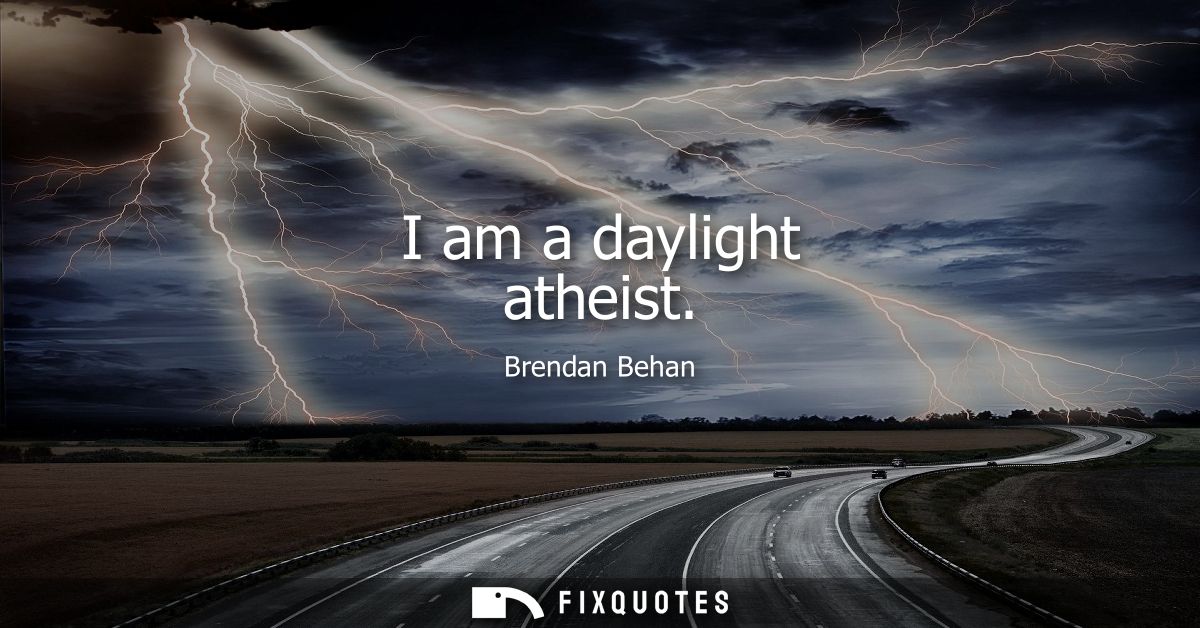"I am a daylight atheist"
About this Quote
Brendan Behan’s phrase "I am a daylight atheist" captures an attitude of pragmatic skepticism shaped by circumstance rather than ideology. Rather than avowing a consistent, dogmatic atheism, Behan points to a conditional relationship with faith: during the clarity and comfort of daylight, when the world is illuminated, troubles seem manageable, and fears are distant, skepticism prevails. Doubt becomes easy; rationality and confidence take center stage alongside the warmth and security of sunlight.
Yet, implicit in Behan’s words is the suggestion that this atheism is temporary. When night falls, when darkness, solitude, or danger encroaches, uncertainty grows, existential anxiety rises, and the urge for comfort, reassurance, or divine intervention can reappear. Faith, or at least the longing for something beyond rational understanding, may emerge when the world feels less safe, less knowable. Behan’s declaration balances between bravado and confession, hinting that nonbelief isn’t always ironclad; our convictions ebb and flow according to environment, emotion, and vulnerability.
The phrase also carries a sly humor and an understanding of human frailty. It gently mocks the illusion of absolute certainty, admitting how context shifts belief. In relaxed or fortunate circumstances, under the visible, trustworthy "light" of reason, reliance on logic seems natural, but in moments that expose our fragility, even the most hardened skeptic may hedge, hoping for meaning or aid from sources that reason alone can’t provide.
Behan’s description resonates beyond the religious sphere, speaking to the human tendency to adapt beliefs according to state of mind, physical setting, or the expectations of company. It embodies a worldview both earthy and honest, recognizing belief as a response to changing realities rather than a lifelong, unalterable stance. Through this phrase, Behan encapsulates the wavering line between doubt and faith, couched in the rhythms of day and night, reason and fear.
About the Author

